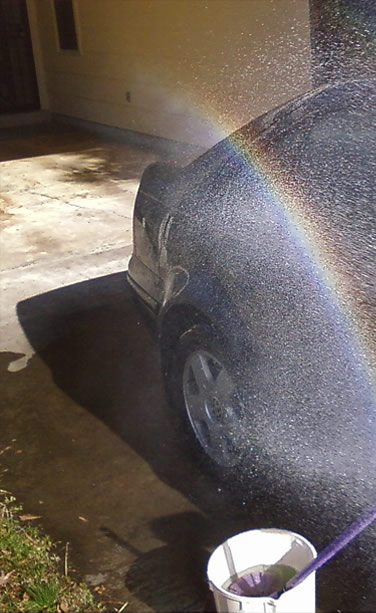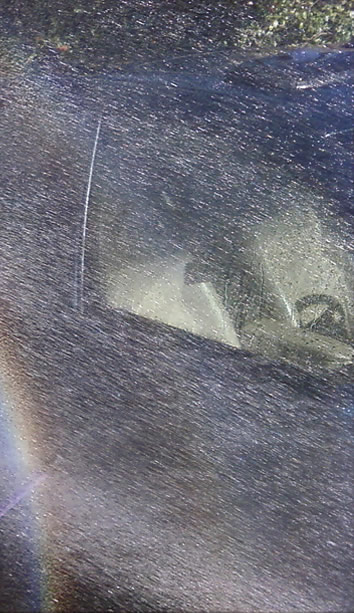 |
 |
"On January 9th, I took advantage of a warm 62F (17C) winter's day in Memphis, Tennessee, USA to wash my car. By placing the water nozzle at the right location, and using my cellular telephone's camera, I was able to get a primary and secondary "rainbow" to appear right in front of me." ©James Baker, shown with permission. Rainbows are fairly rare. They are seen only a few times a year in most places. Halos, for example, are much more common. Their scarcity can be overcome with bright sunshine and a hosepipe. It is possible to see, as here how the bows are made from the glints of individual water drops. James' image shows Alexander's dark band clearly, the region between the primary and secondary where drops cannot send rainbow rays to your eye. That some drops are visible in this region is probably because sunlight also reflects from their external surfaces. Move around, the elusive bows move with you. Rainbows are only a collection of rays reaching your eye from drops that happen to be in the right place. They do not exist in space and it is meaningless to talk of their physical size or distance. Adjust the hose to give a coarse or fine spray. Large drops produce bright narrow bows. Small drops give broader bows with less saturated colours. Look for supernumeries and how their spacing alters with drop size. Look for supernumeraries outside the seconday. These are rare in natural rainbows but with care a hospipe will show them. Next try rainbow making on a much larger scale. |
 |
 |

| About - Submit | Optics Picture of the Day | Archive | Previous | Next | Today |